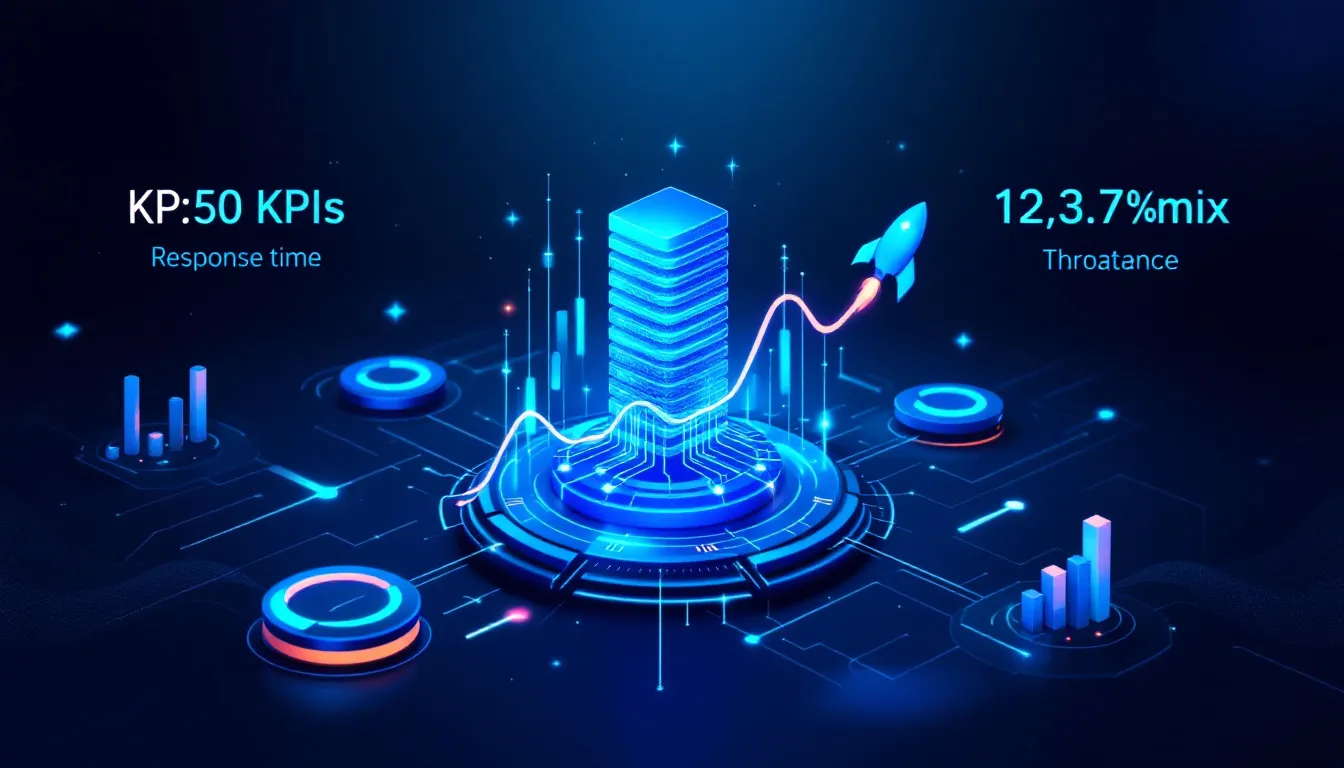Optimizing database performance is vital for large-scale applications managing vast datasets and high user concurrency. This guide explores essential strategies to boost efficiency, covering indexing, query tuning, data distribution, and more.
Indexing Techniques for Large Databases

Indexing enables quick data retrieval, which is critical in high-load systems. Focus your indexing on frequently queried columns, especially those in WHERE, JOIN, and ORDER BY clauses. Composite and covering indexes are valuable for complex queries, minimizing the need to access full rows.
Avoid over-indexing, as it can slow write operations and inflate storage. Regularly review index usage and remove outdated or fragmented indexes to maintain performance.
Optimizing Query Execution Plans
Optimizing query execution plans helps reduce resource load and boost speed. Avoid full table scans, simplify complex joins, and ensure indexes are used effectively. Tools like execution plan analyzers can reveal bottlenecks.
Clustered indexes are beneficial for range queries, while dynamic re-optimization adjusts plans based on data changes. Ongoing query analysis ensures sustained efficiency as workloads evolve.
Efficient Data Distribution Strategies

Efficiently distributing data across servers (nodes) balances load and improves access speed. Analyze query patterns and data growth to ensure even distribution. Implement distributed caching to reduce query volume on any single node.
Monitoring node performance helps prevent imbalances and maintains responsiveness under scaling demands.
Sharding for Horizontal Scaling
Sharding is a powerful strategy for horizontal scaling, especially for large databases. Distributing data across multiple servers through sharding enhances performance and scalability. This approach mitigates bottlenecks by allowing parallel processing of smaller data sets, which improves response times for data retrieval. Each shard operates independently, ensuring that the application remains functional even if one shard fails.
Choosing an effective shard key is crucial for balancing data distribution and avoiding hotspots in a sharded database. Different sharding strategies, such as geo sharding and hash-based sharding, offer tailored solutions for specific use cases.
Adding more nodes or servers to distribute workloads is essential for horizontal scalability during high traffic periods.
Implementing Caching Mechanisms
Caching is a game-changer for optimizing performance. By storing commonly accessed data in a temporary data storage area, caching significantly enhances the speed of data retrieval. Effective caching reduces direct queries to the database, leading to enhanced performance and scalability. In-memory caching, which leverages server RAM for rapid data access, is the most prevalent type of caching.
The choice of cache eviction policy is crucial for maintaining cache efficiency and data accuracy. Automated cache invalidation prevents stale data from being served to users, ensuring data reliability.
Optimized database caching can also lead to notable cost savings by delaying the need for hardware upgrades. Effective caching mechanisms reduce the workload on the primary database and improve overall performance.
Database Configuration Tuning
Customizing database settings to match workloads enhances efficiency. Tune memory allocation, connection limits, and disk I/O based on traffic patterns.
Use configuration management tools to enforce consistency across environments. Proper tuning reduces resource waste and improves resilience.
Routine Maintenance and Automation
Routine maintenance is essential for long-term database performance and reliability. Essential tasks include rebuilding fragmented indexes and updating statistics. Automating these routine tasks can save significant time and reduce manual errors, ensuring consistent performance improvements.
Regular audits are necessary to evaluate the effectiveness of integrity checks and identify areas for improvement. Continuous monitoring and maintenance are crucial for maintaining optimal performance and avoiding unexpected issues. Incorporating automation and best practices into your maintenance routine ensures your database remains in top shape.
Leveraging Distributed Database Architectures

Distributed databases handle massive datasets by enabling parallel processing and failover capabilities. They improve availability through data replication and allow seamless scaling by adding nodes.
Such architectures are especially effective for applications requiring high availability and geographic redundancy.
Cloud-Based Solutions for Scalability
Cloud-based databases offer dynamic resource scaling based on demand, making them ideal for handling large data volumes and optimizing performance. Cloud-native solutions like TiDB have helped enterprises maintain database scalability and availability during peak loads. Implementing a unified data infrastructure is crucial for maintaining scalability across varied applications and data types.
Cloud services often include automated maintenance features that simplify database management. Cloud-based solutions allow seamless scaling across multiple servers and ensure data availability during high traffic periods. This approach supports both horizontal and vertical scaling, making it a versatile solution for growing database scaling.
Ensuring Data Integrity and Fault Tolerance
Ensuring data integrity and fault tolerance is paramount for database performance. Implementing data quality tools ensures the accuracy and consistency of data through automated profiling and validation. Data replication, clustering, and automated failover mechanisms are crucial strategies to ensure data integrity, fault tolerance, and redundancy. Regular failure simulations and testing are essential to ensure these mechanisms work effectively.
TiDB ensures data consistency through multiple replicas and the Multi-Raft protocol, providing a robust solution for maintaining data integrity. Focusing on these strategies ensures your database remains healthy and resilient, even when facing unexpected challenges.
Performance Testing and Benchmarking

Performance testing is crucial for understanding how your database behaves under different conditions. Factors impacting performance include inefficient storage/retrieval, inadequate hardware, and processing bottlenecks. Utilizing database monitoring tools allows administrators to detect issues early and maintain optimal performance while ensuring system performance.
The Yahoo! Cloud Serving Benchmark (YCSB) is a widely used tool for assessing the performance of various database systems. Transparent benchmarks must detail the hardware used and ensure that competing systems are configured fairly. Real-world benchmarks provide more accurate performance measurements, using actual applications and data.
Effective load testing evaluates multiple database operations, including reads, write operations, and concurrent actions. Focusing on performance testing and benchmarking results in continuous performance improvements.
Cost Optimization Strategies
Cost optimization is a critical aspect of database management. Identifying and consolidating idle resources helps avoid costs associated with underutilized services. Eliminating unused resources can significantly reduce unnecessary expenses in cloud environments. Monitoring cloud billing and resource usage helps identify areas for potential savings.
Right-sizing cloud services allows for optimal resource allocation based on actual usage needs. Implementing a cloud-native design can leverage unique cloud capabilities to reduce operational expenses. Using reserved instances can lead to substantial discounts compared to on-demand pricing.
Adopting these strategies to optimize performance while managing costs effectively.
Final thoughts
Optimizing database performance for large-scale applications involves a multifaceted approach. From efficient indexing techniques and query optimization to leveraging distributed architectures and cloud-based solutions, each strategy plays a crucial role in maintaining optimal performance. By implementing these best practices, you can ensure your database scales seamlessly, remains cost-effective, and delivers exceptional performance. Remember, a well-optimized database is the backbone of any successful large-scale application.



